Scott Hamilton – 22 September, 2014
After educating himself in lalava, Filipe Tohi began to reintroduce the art to Tonga and to other parts of the Pacific. In 2004 he was asked to raise the ceiling of the huge Fale Pasifika, which was being built to serve The University of Auckland's thousands of Pacific Island students. With its exuberant mixture of ancient materials like coconut lashing and modern steel and glass, its defiantly tropical dome, and its eschewal of the alienating partitions, the Fale Pasifika is a building for an alternative reality, a fragment of an Auckland that might have been.
Mangere
Sopolemalama Filipe Tohi
Tukutuku Kafa Mei Lotomoana: Survey Part Two
Curated by James Pinker
6 September - 2 November 2014
For the last couple of years, billboards and newspaper advertisements in Auckland, Sydney, and other Australasian cities have used the slogan ‘the real South Pacific’ to promote travel to Tonga. Perhaps realising that their country’s scattered, impoverished and frequently rocky islands will never be able to offer the endless beaches and creature comforts of Waikiki or Rarotonga, the planners at Tonga’s Ministry of Tourism are trying to impress Westerners with images of languor and tradition. Tonga is, their advertisements insist, a place where the average Aucklander or Sydneysider, exhausted by traffic jams and office deadlines, can escape from the aggravations of modern life. Sitting around a kava bowl or in a beachside fale, observing a fisherman steering his outrigger slowly across a lagoon or a group of farmers chatting in a field of talo, the weary Westerner will learn the slow, primeval rhythms of island life, and forget, even if temporarily, the disciplined rush of modern capitalist society.
But visitors who explore Nuku’alofa, the city where forty percent of Tongans live, may find their faith in a pre-modern island paradise disturbed. Beside Nuku’alofa’s streets of crushed coral, tin sheds with homemade signs sell bootleg copies of science fiction films like Singularity and Elysium on DVD and Blue Ray. Almost every pedestrian carries a cellphone, and two phone companies, the British-owned Digicel and the government-run Tongan Communications Company, have raised duelling advertising hoardings above street corners. In Nuku’alofa and in villages on the city’s periphery, internet cafes with talismanic names - Sydney Internet Exchange, Electronic City - are thronged with young men and women checking their facebook accounts and playing Grand Theft Auto. Tonga’s most popular newspaper, the pro-democracy, anti-government weekly Koe Kele’a, features a regular two-page column dedicated to subjects like space travel and UFO sightings.
And yet Tonga remains a small nation with an agricultural economy, located far from the centres of twenty-first century economic and political power. Nuku’alofa may teem with internet cafes, but its connection with the world wide web is intermittent. Koe Kele’a’s fantasies about warp-speed flights across the universe sit beside reports on the pumpkin harvest. Tonga may have imported all sorts of technological devices and practices from larger nations, but these innovations are typically subservient to Tongan traditions and needs. The few multinational companies to have invested in Tonga have complained about employees who prioritise church feasts and kava circles over deadlines.
In a career lasting for than three decades, Filipe Tohi has created a style that reflects the fascinating contradictions of his homeland.
At the end of the 1970s the young Tohi travelled from Nuku’alofa to New Zealand, where he settled in the Taranaki and learned how to carve in wood and stone from a group of local sculptors. A decade later Tohi returned to Tonga, determined to master his homeland’s endangered artforms.
Tohi travelled into the countryside west of Nuku’alofa, where the buildings of Sia’atoutai, the theological college of the Free Wesleyan Church, sit permanently submerged in the shadows of ancient trees. Tohi hadn’t come to Sia’atoutai to study theology, but he spent hours inside the school’s chapel, whose tin roof is painted in the tropical shade of blue favoured by the Free Wesleyans. The Sia’atoutai chapel was built a few decades ago, but it contains another, much older structure, a fale-church which once stood on Mounga Saione, or Mount Zion, the low hill on Nuku’alofa’s waterfront that Tupou I, the unifier and moderniser of nineteenth century Tonga, made into a beach head of Christianity.
The first churches to rise on Zion were improvisations with loose thatch and roughly hewn timber; they succumbed to summer storms. In 1885, as he prepared to break with the international Methodist movement, which he judged overly sympathetic to British imperialism, and found the Free Wesleyan Church, the elderly Tupou I demanded a more durable structure for Zion. The new building was intended as a symbol of Tongan spiritual and political independence, and Tupou turned to tufunga lalava, masters of the ancient Tongan art of lalava, or lashing, to raise its roof. After thousands of orange and red fibres had been prised from husked coconuts, soaked in water, dried in the sun, and rolled into tough flexible lengths of rope, Tupou’s craftsmen lashed polished coconut logs together until they made a high dome. Not a nail was needed.
As tufunga lalava died off and building fashions changed the Mount Saionga chapel began to seem an anachronism; eventually it was removed to Sia’atoutai. By the time Filipe Tohi visited, the chapel was one of the last large-scale examples of lalava left in Tonga. (1) Staring reverently at the ceiling that Tupou I had raised, Tohi learned to read the pattern of red and orange cords. He realised that the lalava patterns, with their intricate mixtures of repetition and innovation, had been made to convey information, as well as to hold to a building together. Like Mesopotamian tablets and Egyptian hieroglyphs, lalava patterns speak of the genealogy, cosmology, and sacred places of their makers. (2)
After educating himself in lalava, Filipe Tohi began to reintroduce the art to Tonga and to other parts of the Pacific. In 2004 he was asked to raise the ceiling of the huge Fale Pasifika, which was being built to serve The University of Auckland’s thousands of Pacific Island students. With its exuberant mixture of ancient materials like coconut lashing and modern steel and glass, its defiantly tropical dome, and its eschewal of the alienating partitions which are so common in fale palangi, the Fale Pasifika is a building for an alternative reality, a fragment of an Auckland - or Tamaki Makaurau, or ‘Atalanga - that might have been, if the Anglo-Saxon soldier-settlers of nineteenth century New Zealand had been defeated by the army of the Kingitanga, or overtaken by Tupou I’s resurgent Tonga.
Filipe Tohi has not been content only to work as a traditional tufunga lalava. Over the past decade he has made many sculptures that realise lalava patterns in three dimensions, as well as drawings and paintings based on the form.
When he cuts wood and stone into rectangles, and arranges these rectangles into larger shapes, Tohi is remembering the feats of the master masons of traditional Tonga. In the late Middle Ages Tongan sailors and raiders built an empire, and vaka filled with booty and tribute from ‘Uvea, Samoa, and Fiji filled the lagoon beside Lapaha, the country’s traditional capital. Huge mounds of earth were raised over the graves of the kings and high chiefs of Lapaha, then adorned with rectangular blocks cut from the reefs of subjugated islands. Tier after tier of beachrock rose on the royal tombs.
The late great Tongan philosopher Futa Helu argued that his country’s arts are best understood as ways of perfecting life. Helu suggested that, by removing all that was arbitrary and ugly from human movement, Tongan dancers become, for the duration of their performances, ‘divine’; poets achieve the same state by creating intricate, symmetrical things out of the chaos of language. (3)
Filipe Tohi’s work might have been made to illustrate Helu’s account of Tongan art. His sculptures and drawings perfect life, by turning the vast spaces and shifting scenery of the Pacific into graceful patterns of lines. Tohi’s patterns are symmetrical, but they are not static. The shapes in his sculptures and drawings expand and contract gently.
In 2012 Tohi exhibited a series of black and white computer-assisted drawings called Atatouliliu, which featured scores of diamond and cross-shaped lalava patterns. These patterns were allowed to overlap and partially obscure each other, so that the drawings seemed to ripple. The overlaps also created a sense of depth, as some patterns appeared to recede in the composition while others seemed to rise. Despite their severely limited palette and rigorously abstract design, the Atatouliliu drawings effortless evoke the vastness and constant movement of the Pacific Ocean. These drawings make us stowaways on the outrigger canoes built by the tufunga lalava of ancient Polynesia.
Works like Atatouliliu can be seen as challenges to high modernist European art and design. Where modernist masters like Mondrian and Le Corbusier too often sought to abolish the natural, sensual world, preferring the straight line to the curve and the grid to the circle, Tohi seeks to reconcile the natural and the human. And where European modernism was often based upon a self-conscious rejection of all earlier forms of culture, Tohi’s (counter)modernism unapologetically incorporates the ancient design traditions of the Pacific. Like so many of his countrymen and women, he has made the innovations of the world outside Tonga subservient to his own identity and preoccupations.
In a new show at the Mangere Arts Centre, Tohi has collected some of his best lalava-based work. Curated by James Pinker, Tukutuku Kafa Mei Lotomoana: Survey Part Two includes sculptures, drawing on papers, digital prints, paintings, and hanging cardboard tubes. The exhibition’s centrepiece is a big sculpture in steel. The tufunga lalava who laboured for Tupou I nearly one hundred and thirty years ago would surely admire the energy and versatility with which Filipe Tohi has perpetuated their artform. (4)
Scott Hamilton
(1) There is disagreement about whether lalava had become an extinct artform by the time Filipe Tohi visited Sia’atoutai at the end of the 1980s. Some Tongans suggest that lalava tufunga were no longer active when Filipe Tohi began to learn the art, but others have told me that a few craftsmen were still at work in some of the outlying villages of Tongatapu. Whether or not lalava was extinct in the late ‘80s, Filipe Tohi has certainly been responsible for the revitalisation and popularisation of the art.
(2) Filipe Tohi has always insisted that lalava offer a way of preserving and communicating information. In a statement reproduced on the website of the Tautai Contemporary Pacific Arts Trust, for example, he describes lalava as a ‘visual language’ that can convey ‘principles of cultural knowledge and history’ as well as ‘memories and experiences’. It has not always been easy, though, for audiences to access all of the information encoded in Tohi’s lalava. The patterns of his sculptures and drawings often seem to connote rather than denote - they remind us, with their artful arrangement of lines, of the seas and landscapes Tonga, but they do not obviously communicate specific information.
It is possible that Tohi is deliberately reticent about some of the meanings in his work. There is certainly a tradition, in Tonga, of keeping important pieces of information hidden from large audiences. In his fascinating essay ‘Understanding Traditional Polynesian History’, which was published in the Journal of Pacific History in 1993, Niel Gunson talks about some of the secret books in which Tongan families have kept genealogical records, songs, and accounts of ancient events, and describes his own, decades-long search for one of these esoteric texts.
(3) Futa Helu made his comments about dance in 1997, when he was introducing performers from the ‘Atenisi Institute, the small but famous school that he founded on the western outskirts of Nuku’alofa, to an audience in Wellington. Both Helu’s talk and the dance that followed it can be watched on at https://www.youtube.com/watch?v=aiWc1GLzNSI Paul Janman’s acclaimed feature length documentary film Tongan Ark, which can be accessed via http://www.tonganark.net, describes Helu’s thought and his work at ‘Atenisi.
(4) Filipe Tohi has sought to perpetuate Tongan culture and history by collecting artefacts and stories, as well as by making art. He has built up one of the finest private collections of Tongan carvings, and he has also been gathering the stories of members of the Tongan community in Auckland on film. I described Tohi’s attempts to preserve the memories of the Tongans who stowed away on ships bound for New Zealand in this blog post: http://readingthemaps.blogspot.co.nz/2013/09/floating-to-elysium.html
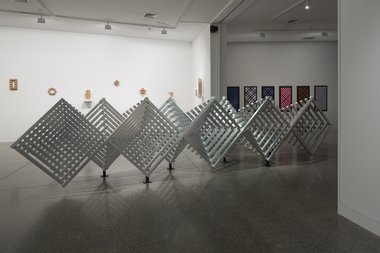
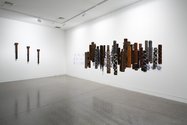
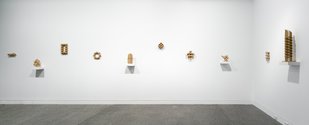

 Two Rooms presents a program of residencies and projects
Two Rooms presents a program of residencies and projects Advertising in this column
Advertising in this column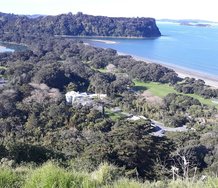
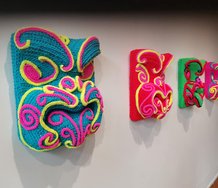

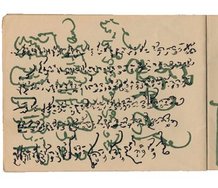
This Discussion has 0 comments.
Comment
Participate
Register to Participate.
Sign in
Sign in to an existing account.